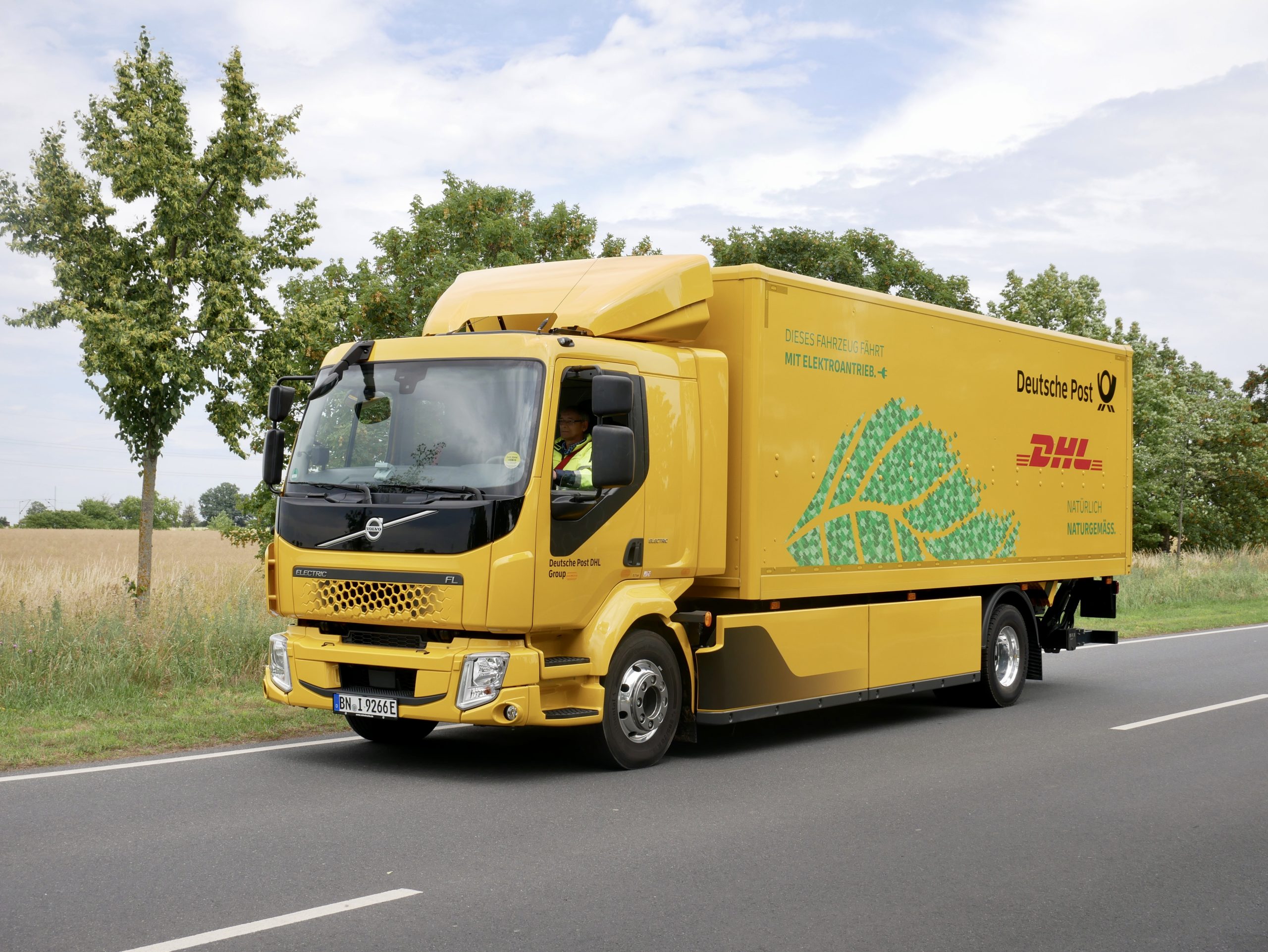 Foto: © Deutsche Post DHL Group
Foto: © Deutsche Post DHL Group
Deutsche Post DHL together with the Federal Minister of Digital Affairs and Transport (BMDV), Volker Wissing, presented 13 new electric trucks in the capital. The vehicles and the charging infrastructure received a total of 2.3 million euros in funding from the Federal Ministry of Digital Affairs and Transport under the Directive on the Promotion of Light and Heavy Commercial Vehicles with Alternative, Climate-friendly Drive Systems and Associated Fueling and Charging Infrastructure (KsNI). The funding directive is coordinated by NOW GmbH, and applications are approved by the Federal Office for Logistics and Mobility (BALM).
The Volvo FL Electric 4×2 trucks are two-axle vehicles with a gross vehicle weight of 16.7 tons, up to 130 kW of power and a range of up to 300 km (manufacturer’s data). Charging takes place overnight at DC charging points provided by suppliers Elexon and Ecoenergetyka, among others, on the premises of the Schönefeld mail center. With an AC charger, it takes about nine hours to fully charge the batteries. With a DC charger, the charging time is reduced to about two hours. 95 percent of the electricity used by Deutsche Post is green electricity.
In addition to the 13 e-trucks in Berlin, Deutsche Post DHL is using 110 biogas trucks nationwide in regional transport for letters and parcels and also for the so-called “main run”, i.e. the transport of items between the letter and parcel centers. By the end of 2023, there will be around 350 of these trucks. In addition, there will be more than 24,000 electric transporters for the delivery of letters and parcels. Deutsche Post DHL thus operates by far the largest fleet with alternative drives in road transport in Germany.
As part of its sustainability program, Deutsche Post DHL invested a total of 700 million euros in electromobility and green infrastructure in 2022. In 2023, a further 500 million euros are currently planned, subject to possible regulatory adjustments through a new Postal Act. The financial resources will not only go to the vehicle fleet, but also to the conversion and new construction of climate-friendly operating sites, for example CO2-free delivery bases with photovoltaics, heat pumps and building automation. There are currently around 100 of these, with a target of 280 by 2025. In addition, around 6 percent of parcels are transported by environmentally friendly rail. This corresponds to around 120 million parcels per year by rail – far more than any other parcel service provider transports via this route. In perspective, this share is to be increased to 20 percent. And with new “GoGreen Plus” products, the company is for the first time offering customers the opportunity to actively manage and reduce their CO2 emissions generated during transport and specifically select climate-friendly transport by rail.